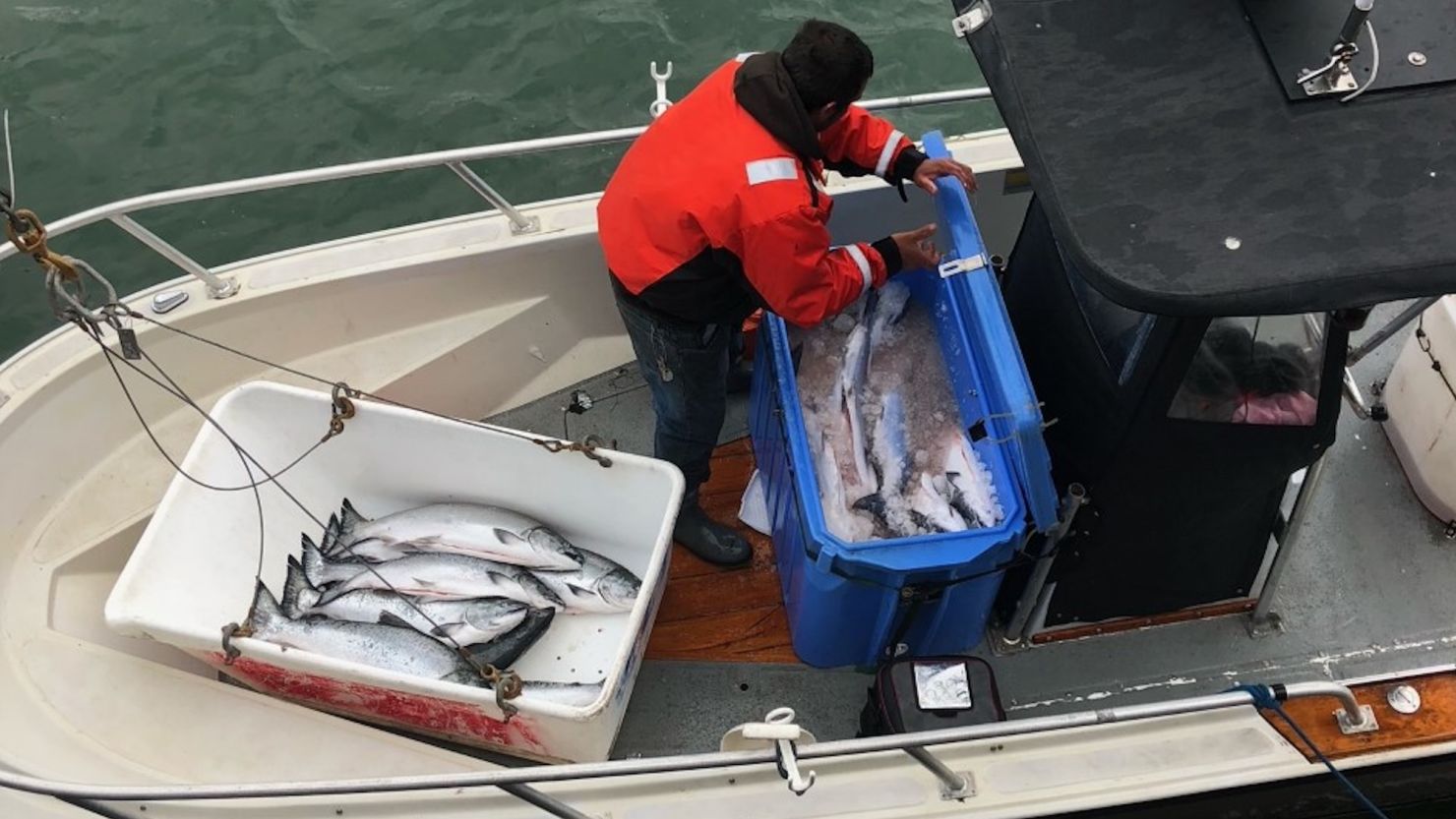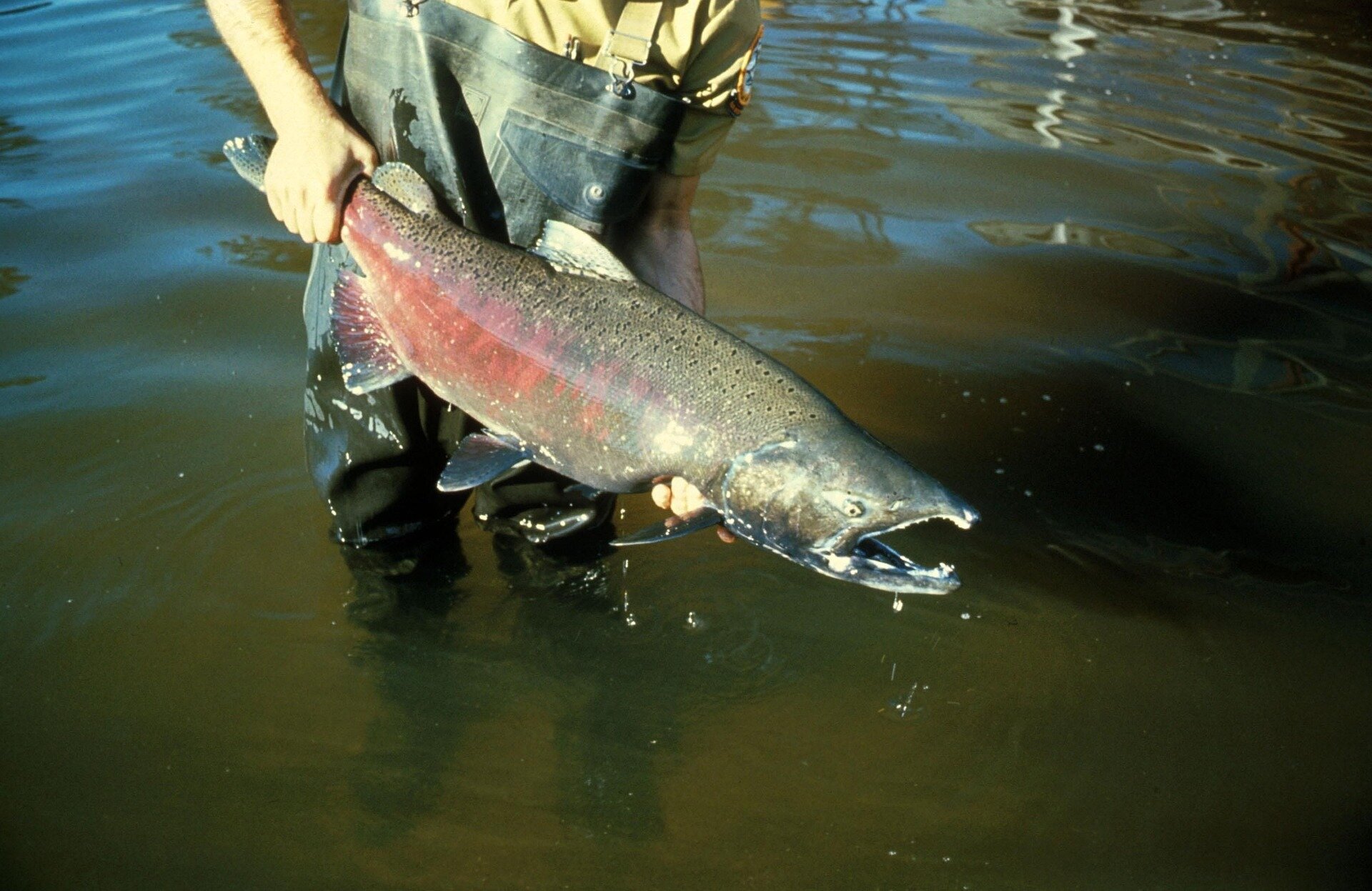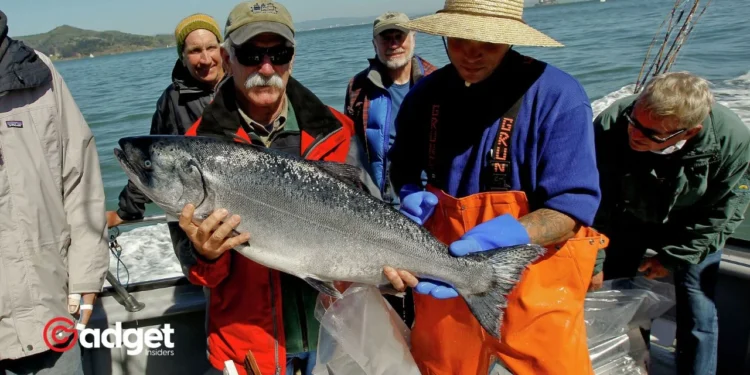In an unprecedented decision that marks only the fourth occasion in history, the Pacific Fishery Management Council has once again ruled out both commercial and recreational salmon fishing along the California coastline.
This move reflects deepening concerns over the perilously low numbers of Chinook salmon, a situation grim enough to halt an industry supporting thousands.
The Toll on Local Economies
The ban, unanimously decided upon by the Council, serves as a somber repeat of past closures in 2008 and 2009, and more recently in 2023. These decisions, although crucial for conservation, have sent shockwaves through the local fishing communities.
The industry, vital for the livelihoods of many, finds itself in a relentless struggle, attempting to rebound from consecutive years of economic setbacks.
Unraveling the Causes Behind Declining Salmon Stocks
A concerning report in February revealed that only about 6,100 fall-run Chinook salmon returned to spawn on the upper stretches of the Sacramento River last year—a stark contrast to the annual average of over 175,000 fish recorded between 1996 and 2005.
Experts point to a combination of prolonged drought and significant water diversions as primary culprits, leading to river conditions that are less than ideal for its survival.
Further complicating the matter are the ongoing impacts of climate change, which not only threaten the salmon’s food sources in the Pacific but also contribute to rising river water temperatures.
Additionally, policy changes under the previous federal administration have seen a rollback of waterway protections, allowing for increased water diversions to agricultural interests—a move criticized by environmentalists and industry experts alike.
Federal fishery managers voted Wednesday to cancel all commercial and recreational salmon fishing off the California coast for the second year in a row, and only the fourth time in state history, because of dwindling stocks. https://t.co/lqp3l0rYQN
— ABC News (@ABC) April 11, 2024
Voices from the Field: The Industry’s Outcry
Scott Artis, executive director of the Golden State Salmon Association, expressed grave concerns about the state’s water management policies.
According to Artis, the current strategies have led to “dangerously low river flows, unsustainable water diversions out of our rivers, record high water temperatures because of dam operations, and record numbers of salmon eggs and juveniles killed in our streams.”

Artis’s statement underscores a growing frustration among those dependent on the salmon industry.
“Our water, our natural resources, the resources every Californian and the entire salmon industry rely on, are being stolen on Governor Newsom’s watch,” he declared, highlighting a crisis that extends beyond environmental issues to touch on governance and resource management.
The Bigger Picture: Salmon’s Life Cycle and Conservation Efforts
Salmon are anadromous fish, born in freshwater environments like the Klamath and Sacramento rivers, before migrating to the Pacific Ocean.
Here, they mature over an average of three years. The life cycle of these fish is a marvel of nature, with their return to freshwater to spawn and subsequently die. This cycle is not just a fascinating natural phenomenon but also a crucial one, supporting diverse ecosystems and the fishing industry.

The state’s more vulnerable salmon species, such as the spring-run Chinook and winter-run Chinook, currently hold positions on the Endangered Species Act list, with the Central California Coast coho salmon being off-limits to commercial fishers since the 1990s.
These designations underline the critical need for ongoing conservation efforts, which now more than ever, demand innovative solutions and collaborative governance to ensure the survival of these iconic species.
Looking Ahead: What’s Next for California’s Fisheries?
As the Pacific Fishery Management Council’s ban takes effect, all eyes are on the upcoming decisions by the California Fish and Game Commission regarding potential additional restrictions on river fishing.
These decisions will be pivotal in shaping the future of salmon in California, balancing the immediate needs of the fishing industry with the long-term health of salmon populations and the broader ecological implications.
The repeated closures signal a dire need for systemic change in how water resources and fish habitats are managed. Only through such transformative approaches can the dual goals of ecological sustainability and economic resilience be achieved.
As California navigates these challenging waters, the global community watches and learns, recognizing the intricate link between local actions and their widespread environmental impacts.










